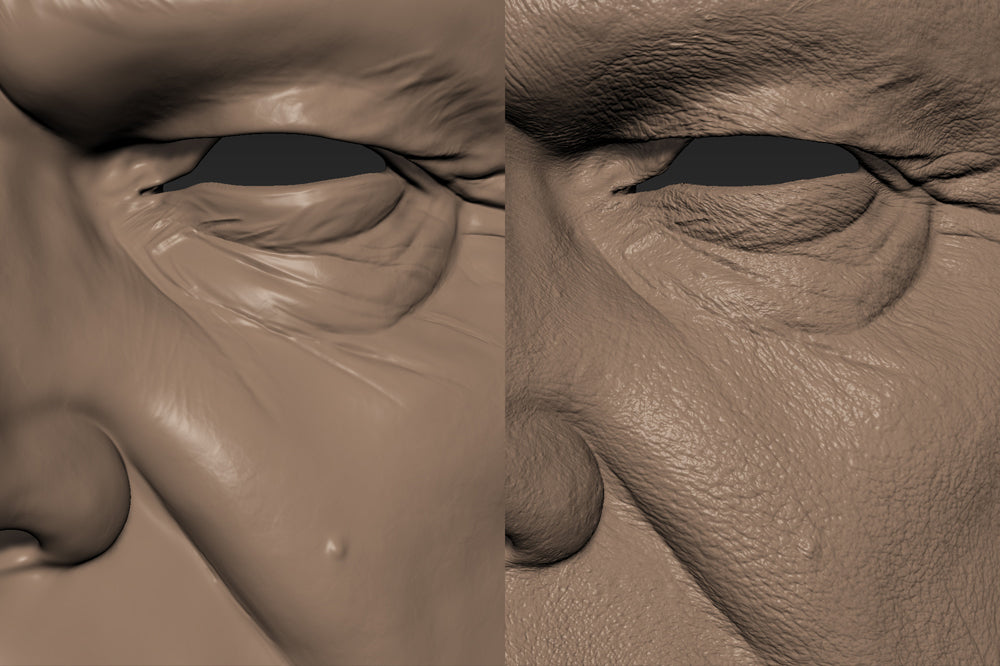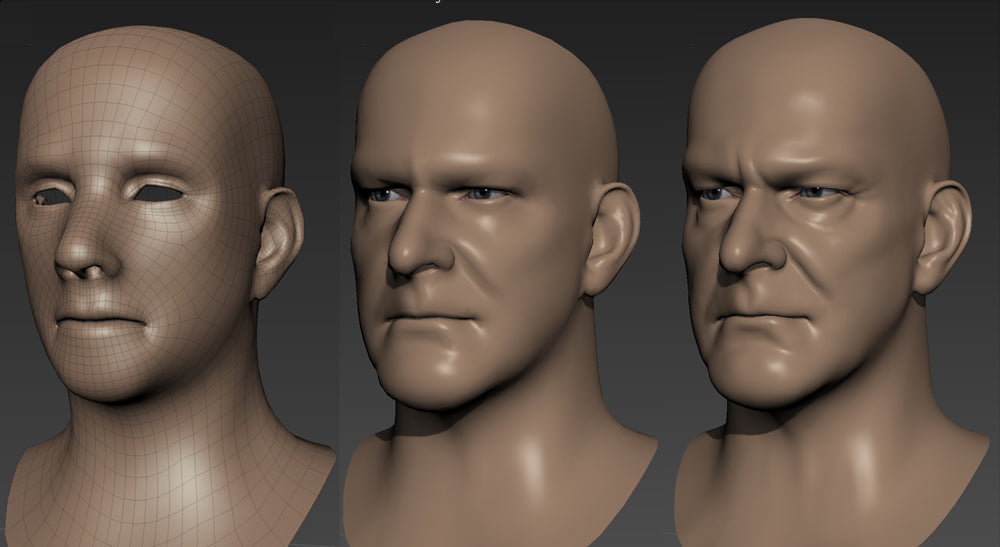
My name is Peter Zoppi and I am a Character Art Specialist working at Treyarch on the Call of Duty: Black Ops franchise. I have a wealth of experience in both production and education over the past 15 years. I teach classes with CGMA and also mentor individuals with the Mentor Coalition.
I have a passion for working on high resolution pre-rendered characters in my free time. It allows me to experiment with new technology that I can tailor towards game art when needed.

What is your personal approach to digital arts, and how are you connected to texturing?
My approach to digital art stems a bit from production techniques. I like to plan out my art and models from the beginning so I have a clear idea of how to proceed through the entire process. I’ll often do a quick conceptual sculpt to generate basic ideas, but when it comes time to make something final, I’ll create a clean base mesh and begin working from there.
This mesh will also have UVs on it which will allow me to seamlessly transition from the sculpt to texture to test rendering. I like this workflow because it keeps me focused on the art and means I don’t have to pause to sort out technical issues like re-topology and projecting mesh details from one mesh to another.

Are there still challenges you face in your art today?
There are always challenges. If there weren’t challenges I don’t think it would be terribly enjoyable doing the same thing every day. One of the big challenges is staying up to date with current software and tools. Things change very rapidly so it is challenging to adapt and learn new workflows and new tools. Things have gotten significantly more artist-friendly which is great because it allows me to focus more on art and less on technical challenges.
Obviously, a great example is the TexturingXYZ data which revolutionized high frequency detailing for characters.
What is the place of TexturingXYZ maps in your usual workflows? Which software do you use? Any tips for aspiring or professional artists?
My workflow is to establish my base sculpt first on a clean base mesh. I spend time focusing on primary forms before moving into high-frequency detail. Once I have my sculpt in a good spot, I’ll use ZWrap to wrap the TexturingXYZ data onto my mesh. Jeremy wrote up a great tutorial on this here https://texturing.xyz/pages/killer-workflow-using-xyz-and-zwrap
My UVs are very important. I usually do heads with 3 UDIM tiles. One tile for the front of the face. A second tile for the top of the head and ears and a third tile for the neck. This allows me to get the most out of the Multi-Channel Faces and the resolution they provide.
Because I use UDIMs, I do my transferring of the data from the source ZWrap plane to the head sculpt in Mudbox. This is done using the Transfer Paint Layers. Once the transfer is done I can extract the individual channels in Photoshop and apply them one at a time in Mudbox as Sculpt Layers. For this type of work, I really enjoy Mudbox. The layer system is easy and intuitive to use and functions non-destructively. I can very easily control the intensity of each detail layer and also hand fix any issues.
I use the TexturingXYZ alphaSkin pack to clean up and fine-tune different areas of the head. I also spend time working on the model in the middle subdivision levels between the primary forms and the tertiary forms that TexturingXYZ provides. I find this step to be very important. If you neglect the sculpt here you can end up with a model that looks like it has primary forms with high-frequency detail placed on top. The forms need to organically transition through all subdivision levels in order to look correct.
Once I’m done with the sculpt I can extract a 32bit EXR displacement map from Mudbox and begin test rendering with Arnold in Maya.
How did you first learned about TexturingXYZ? Did you have any specific reaction to it?
I recall learning about TexturingXYZ when it was initially launched. I was blown away by the quality of the data and how flexible it is to use. The fact that there are different levels of detail allows for a lot of flexibility when creating art.
The speed in which I was able to get realistic detail on a head was amazing. Since my initial testing, I’ve been a big fan of all of the content that has been released. The only thing I want to warn novice artists about is that you don’t want to become entirely reliant on the maps. There is still a need to analyze and understand different pore structures and where they are located on the face. There will be times where you’ll have to manually clean things up or even do work from scratch and so you really want to understand and analyze the data rather than just blindly using it.
How do you picture the industry in 5 years? Do you feel any tendencies or boundaries that could exist?
This is an interesting question. I recall years ago that people thought that the role of the modeler or character artist would slowly disappear because of scanning technology. That hasn’t happened and there is still a huge need for people who are a blend of artist and technician. Tools are getting better and better which is allowing artists to create higher quality assets in a fraction of the time.
I think the big thing that will continue to happen is we will see more tools and more technology that will enable artists to create more seamlessly without getting too caught up in technical issues. I think TexturingXYZ is a great example. The initial source data was fantastic and still is. It enabled artists to get more realistic results in a shorter amount of time. With the introduction of the Multi-Channel Faces, the process has been sped up even further. All of this still needs to be put into capable hands. There are still a lot of technical and artistic choices that need to be made and my hope is that as time passes artists will spend more time making the important artistic choices instead of spending time on technical challenges…..we are getting there.
https://www.artstation.com/zippzopp
https://www.instagram.com/zippzopp/
https://www.facebook.com/PeterZoppiArt
| We would like to thank Peter for his work and helpful contribution. If you're also interested to be featured here on a topic that might interest the community, feel free to contact us! |








